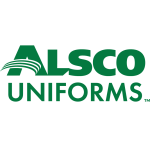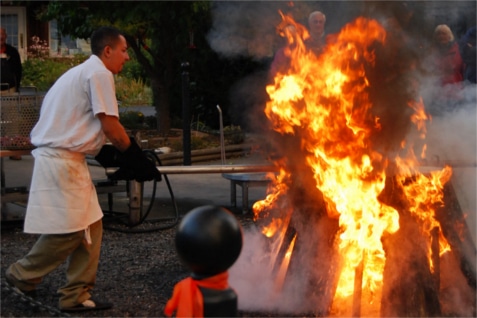It is a truth universally acknowledged that fire is the single largest hazard in a restaurant kitchen threatening workers, patrons and owners.
Kitchen fires damage property, injure people and devastate businesses, leading to loss of revenue and in many cases even permanent closure. According to the National Fire Protection Association, there were an estimated 7,640 fires in restaurants annually, which were reported to fire departments, resulting in damages of close to $250 million in property. This estimate does not include the loss in revenues from either temporary or permanent closure of business. Some restaurants may never open after a fire. More than half these fires were due to cooking equipment.
The presence of hot equipment, open flames, electrical appliances and connections, cooking oils and fuels, cleaning chemicals or paper and plastic products make kitchens vulnerable to fire. The number of fires occurring in a kitchen is hardly surprising given the proximity between the sources of fire such as naked flames, heated elements or electrical devices on the one hand and combustibles such as grease and oils on the other.
So what can you do?
Because of the intrinsic nature of cooking, there is really no way to completely erase the threat of fire. However, precautions can reduce the threat of a completely catastrophic event. Care needs to be taken at all time and in a well planned and organised manner.
Here is a list of things that can be done to reduce the incidence of fire in your kitchen.
Fire Suppression Equipment
Fire suppression equipments and sprinklers have become pretty much standard in modern kitchens. Care needs to be taken to ensure that these are of proper standard. Further, a carefully planned and documented maintenance routine to ensure that these are in proper working condition should be a part of your fire policy.
Tip 1: Install automatic fire control systems
It is best to install automatic fire suppression systems in the kitchen which not only respond immediately to fire, they also shut off power and fuel supply to the kitchen.
Tip 2: Have a backup
Install portable fire extinguishers as backup. Ensure that your fire extinguishers are serviced regularly and never out of date.
Tip 3: Have your equipment in the right place at the right time
Other fire equipment such as fire blankets are always kept in their proper place. This place must be known to all be easily accessed.
Electrical Equipment
Short circuits are a common cause of fire. What makes matters worse is that electric fires tend to spread rapidly throughout the premises too.
Tip 4: Regular maintenance
It is important to schedule regular maintenance on all electrical equipment present in the kitchen. Employees should keep a careful watch out for old, frayed or knotted up cords or wiring and open switch plates which should be replaced immediately
Tip 5: Move away
Ensure that no sources of fire or open combustibles are kept near power sources. Fryers should never be kept near switch plate or plug points.
Kitchen Grease
Hood and vents that are not cleaned regularly and properly pose a serious threat of fire. Not only is the grease build up a likely cause of fire, the clogged vents restrict the flow of air.
Tip 6: Clean hoods and vents
Clean your grill, hood and vents properly. An adequate cleaning schedule varies from kitchen to kitchen and will depend upon a number of factors such as the type of cuisine, the number of fryers being used, the type of filters installed. It is important to ensure that your grill cleaning schedule works for your kitchen and your grills never get too greasy.
Tip 7: Install them properly
Ensure that the filter and other parts are installed properly after it is removed for cleaning. An improper installation will result in the vents or chimney functioning sub-optimally causing grease to build up in other parts of the kitchen.
Tip 8: Involve a professional
Have your exhaust system inspected by a professional for grease build up. This ensures that difficult to reach parts are cleaned. The professional will also tell you if some parts are being overlooked or not being cleaned adequately.
Tip 9: Remove all grease
Clean the grease from other places too. Ensure walls, work surfaces, ranges, fryers, grills, broilers, ovens, fans have no grease built up on them.
Tip 10: Don’t forget the cleaning rags
Ensure dirty rags and soiled wipes which have been used to wipe greasy surfaces are stored separately and laundered properly. A professional laundry service such as that from Alsco is very useful.
Be Prepared
Have an emergency plan in place. Fires do happen and will happen. Despite all the prevention and care, the smallest slip can lead to fire. It is better to be prepared for such situations.
Tip 11: Power Down
Ensure that at all times there is someone responsible and trained to shut off the power and fuel supplies to your kitchen to contain the fire.
Tip 12: Evacuation
To ensure minimal damage of life and everyone exits the restaurant safely, a well planned and executed evacuation is necessary.
- The evacuation plan must be in place at all times and should be formulated after taking into account the possibility of fire in all different parts of the restaurant.
- Have a person responsible for evacuation. This person will decide if evacuation is required and ensure that every person evacuates the premises promptly and safely.
- The evacuation plan should be practised periodically. This will ensure that all the members of staff are well acquainted with the drill and with their responsibilities. Panic at the time of an actual fire incident will be reduced if the evacuation process if a well rehearsed one.
Tip 13: Training
Have your staff trained in Fire and Warden Training. There are many Australian state and territory fire safety rules and regulations which mandate having staff trained in fire safety. Not only is this a regulatory requirement, the trained staff will know what is to be done not only to prevent fire, but also in case of an actual incident of fire as well as after the fire.
Tip 14: First Aid Kits
Have well serviced, up to date first aid kits on hand. For any injuries caused by fire, ensure that your first aid kit always has sufficient quantities of medicines and other equipment needed for burn injuries. Alsco first aid kits do just that. The burn module, like other modules, is organised in a clearly labelled box. Everything needed to provide first aid for a burn is contained in the box in the order in which it is needed.
Remember a little preparation can make or break your business.
For more tips on fire safety and first aid in your dining establishment, visit Alsco at stand D76 at the Foodservice Australia 2015 from May 31. Mark your calendars now.
Photo Courtesy: Learning Lark

